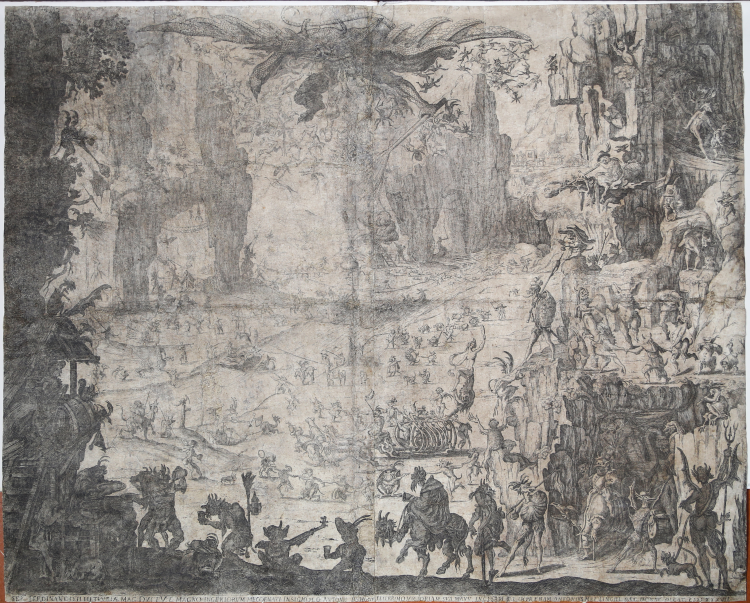Etching,1627, dated on plate and lettered along the bottom, 'Ser.mo. Ferdinando II Hetruriae Mag. Duci V e magno ingeniorum mecoenati, insignem D. Antonii de hoste teterrimo victoriam sua manu incisam et impressam Antonius Meitinghi dat donat dicat MDCXXVII'.
After an etching by J. Callot.
The plate is a copy, in reverse and larger in size, of the first version of the Temptation of S. Antony created by Jacquet Callot in 1617.
Toward the end of his life, Callot created another version of The Temptation of St. Antony. The 1635 composition shares several similar features with the 1617 version, especially the theatrical space framed by rocks on both sides and the devil on the top.
A good copy printed from two plates on two sheets joined down the centre, trimmed, missing the last line with text 'Superiorum permissu' and 'Iacomo Callot invent.' Some exert repairs, generally in good condition.
A very rare work.
The plate is dedicated to Federico II de’ Medici (1610 -1670), fifth Grand Duke of Tuscany, succeeded his father Cosimo II as Grand Duke of Tuscany after Cosimo's death in 1621.
No biographical information are known about the engraver; the name is also written MeiTinghi, sometimes misread as Mei Tinghi (two words). He is just known for this etching after Callot. Also recorded in the 1810 Silvestre sale (p.200) to have etched after Parigi three plates of the obsequies in San Lorenzo in Florence of the Queen of Spain (Margaret of Austria) in 1612.





